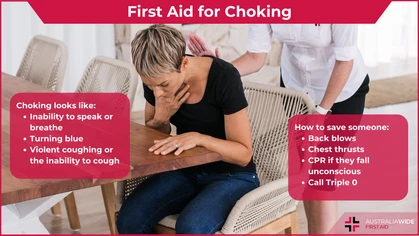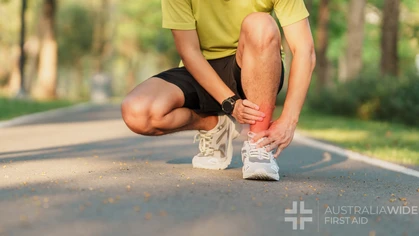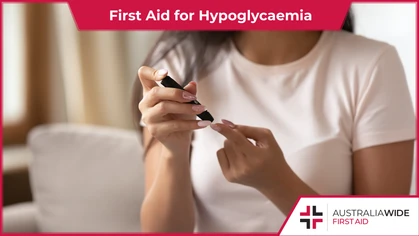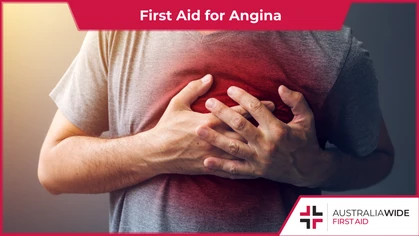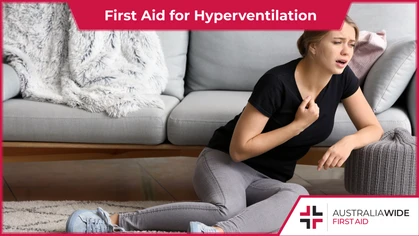First Aid for Migraines

How-To
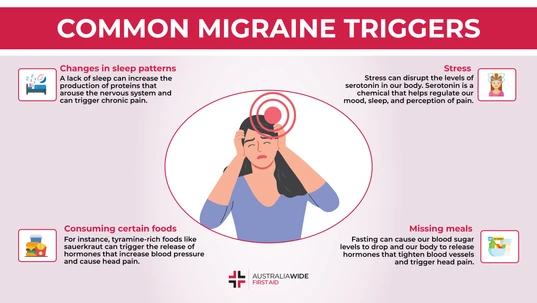
A migraine is a neurological disorder typically characterised by throbbing pain on one side of the head. Migraines are common among Australians and can be triggered by stressful situations and poor sleeping habits. Continue reading to learn how to reduce your risk.
A migraine is a neurological disorder typically characterised by throbbing pain on one side of the head. Migraines are common among Australians and can be triggered by stressful situations and poor sleeping habits. Today, we are going to cover what migraines are, how prevalent migraines are in Australia, and the common signs and symptoms of migraines. We are also going to look at some common causes and triggers of migraines, the differences between migraines and headaches, and how to prevent and treat migraines using first aid. It is important to learn how to identify migraines, how to perform the necessary first aid treatments for migraines, and how to practise prevention strategies to stay migraine free.Prevalence of Migraines in Australia
Migraines affect one in every five Australians. According to a study carried out in Australia in 2018, close to an estimated 5 million Australians suffer from migraines. Among them, 7.6% experience chronic migraines. 71% of migraine sufferers are women and 86% are of working age. 23% of Australian households consist of at least one person who suffers from migraines. The onset of this disorder varies from person to person. For some, it begins in childhood. For others, it starts in their 20s or 30s. It is more uncommon for someone in their 40s to get migraines. The Deloitte Access Economics Report stated that the direct and indirect economic cost of migraines alone in Australia was estimated at 35.7 billion dollars per annum.Signs and Symptoms of a Migraine
Early phase
These warning symptoms begin up to 24 hours before the migraine attack. Symptoms include:- Mood fluctuations
- Changes in appetite
- Drowsiness
- Dysphasia (difficulty finding the right words to say)
- Sensitivity to light and sound
- Changes in behaviour
Aura phase
Visual symptoms affect 90% of people who experience migraine with aura. Aura affects the visual field of both eyes and lasts 5 to 60 minutes before vision restores itself. Symptoms are fully reversible and usually last for only an hour. Symptoms include:- Flashing lights
- Bright zigzag lines
- Difficulty focusing
- Blind spots
Headache phase
- Headache that lasts between 4 to 72 hours
- Pain in one side of the head that can range from moderate and severe to throbbing
- Pain that is aggravated by movement such as walking up the stairs
- Nausea and vomiting
- Photophobia (sensitivity to light)
- Phonophobia (sensitivity to noise)
- Osmophobia (sensitivity to smell)
Recovery phase
- Fatigue
- Drowsiness
- Nausea
- Continued sensitivity to light and sound
Common Causes of Migraines
- Family history: A study found that 90% of migraine patients have a family history of the condition. However, just because one family member gets them does not mean that another will.
- Gender: Women are twice as likely to suffer from migraines than men due to hormones.
- Depression
- Childhood abuse: Emotional abuse is significantly linked to migraines.
Triggers of Migraines
- Stressful situations (emotional triggers)
- Missing meals
- Consuming certain foods
- Changes in sleep patterns
- Changes in the weather
- Hormonal changes
- Alcohol
How to Prevent Migraines
- Prevent a migraine by treating it early with pain relief medications.
- Keep a diary to record when your migraines occur and what triggers them.
- Exercise regularly.
- Psychological therapy, such as cognitive behavioural therapy.
- Acupuncture: Stimulating certain acupoints can reduce pain and boost endorphin production in the brain.
- Aromatherapy: Scented oils promote relaxation and reduce tension in the body.
- Massage: Reduces muscle tension in the body and reduces headaches.
- Meditation: Stress is one of the main triggers for people with migraines. A study conducted in 2014 found that meditation reduces the frequency and duration of migraine attacks.
- Physiotherapy
- Yoga
- Relaxation techniques: Relaxation helps to lower the pressure in the body and its levels of stress hormones and stress chemicals. This subsequently reduces headache and pain.
How are Migraines Different to Headaches?
Headaches cause pain on both sides of the head that is characterised as a tight pressure instead of a throbbing pain. Likewise, the pain from headaches is rarely described as “severe”. However, migraines consist of many symptoms, including headache. Migraines are signalled by throbbing pain in one side of the head. Another big difference between headaches and migraines is that migraines can be debilitating and affect your whole body. And before a migraine begins, people normally feel unwell for a day, and will continue to feel unwell for up to 3 days.First Aid Treatment for Migraines
- Calm environment: Find a dark and quiet room to relax in. Avoid strong sensory inputs such as bright lights, loud sounds and smells. This will calm the brain and stop your migraine faster.
- Limit physical activity: Moving worsens the pain from the migraine headache. Thus, the most comfortable position is to lie down on your back.
- Temperature therapy: A cold compress reduces the numbing pain while a heat pack relaxes the tense muscles and provides pain relief by overriding the pain signals.
- Pain relief medications: Painkillers such as paracetamol, ibuprofen or aspirin can help to relieve pain from migraines. Make sure to follow the directions on the packet.
- Release endorphins: Some activities that release endorphins include mindfulness exercises, meditation, breathing techniques and exercising. When exercising, the body releases chemicals that block the pain signals in the brain, helping to reduce stress, depression, anxiety and migraines. Remember, do not attempt to exercise while dealing with the effects of a migraine headache.
Originally published at
https://www.australiawidefirstaid.com.au/resources/first-aid-for-migraines
as part of the Australia Wide First Aid Articles Library
